Swallowing - Module 9
1/22
There's no tags or description
Looks like no tags are added yet.
Name | Mastery | Learn | Test | Matching | Spaced |
|---|
No study sessions yet.
23 Terms
Anatomical Participants
Includes structures within respiratory, laryngeal,velopharyngeal-nasal, and pharyngeal-oral systems
Includes chest wall, vocal folds, ventricular folds, epiglottis, pharynx, velum, tongue, mandible, lips
Also, esophagus and stomach
- Valve at top of esophagus is called upper esophageal sphincter(UES)
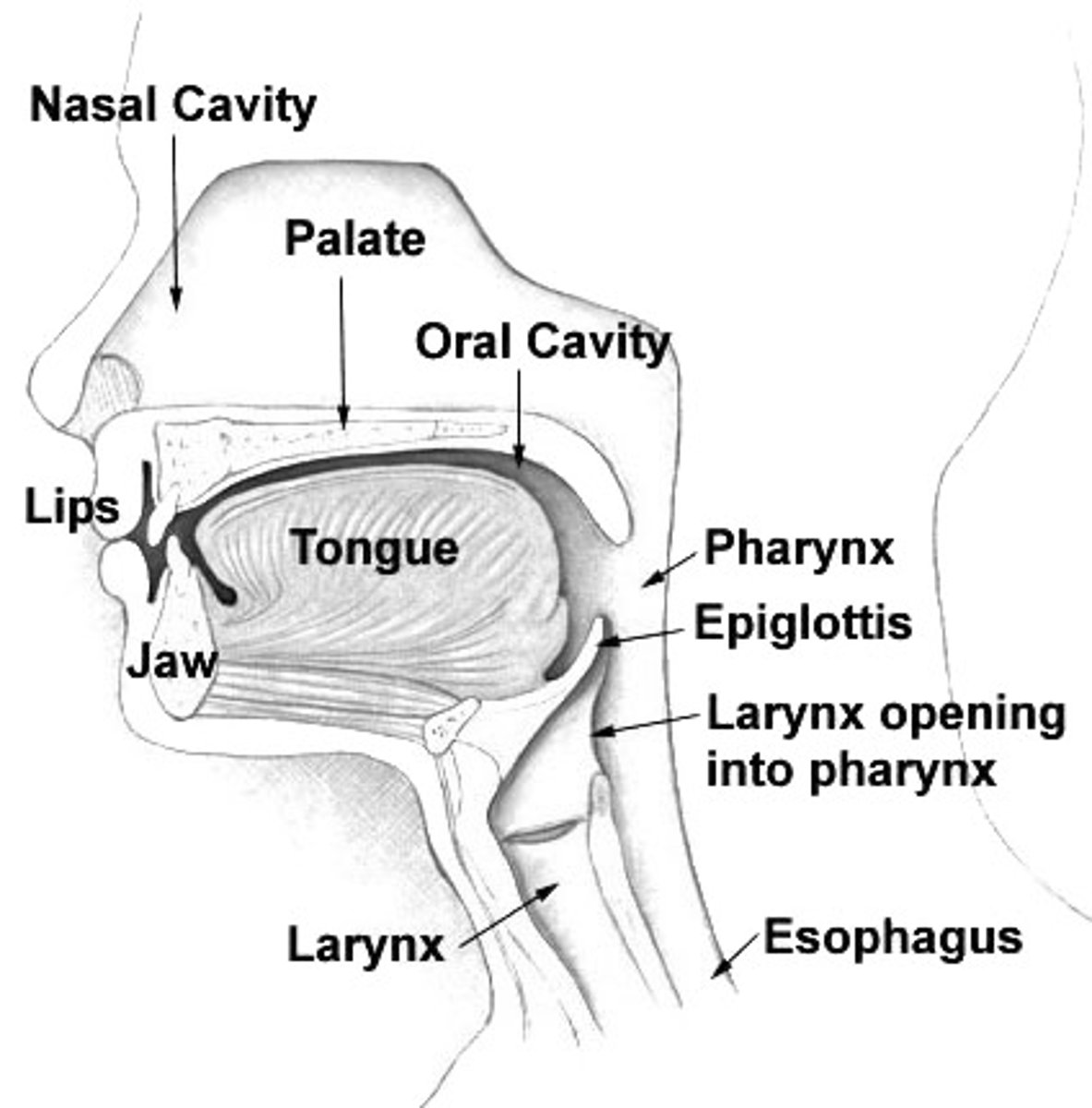
Phases (stages) of a Swallow
Oral preparatory - voluntary
Oral transport - voluntary
Pharyngeal transport - reflexive
Esophageal transport - reflexive

Oral Preparatory Phase
Voluntary
Begins as soon as food enters mouth
Highly variable in duration (3-20 sec)
Purpose: prepare bolus for swallow
Steps:
Liquids
- Elevate mandible and adduct lips to form anterior seal
- Tongue and other structures contain bolus anteriorly
- Depress anterior tongue and elevate sides to form "cup"
Solids
- mandible (teeth), lips, tongue, cheeks grind and manipulate food into bolus
- mix bolus with saliva
- position bolus on anterior surface of tongue
- lips may remain adducted, but not necessary
Elevate back of tongue to velum to form back wall
- separates oral from pharyngeal cavity
- VP open so person can breathe
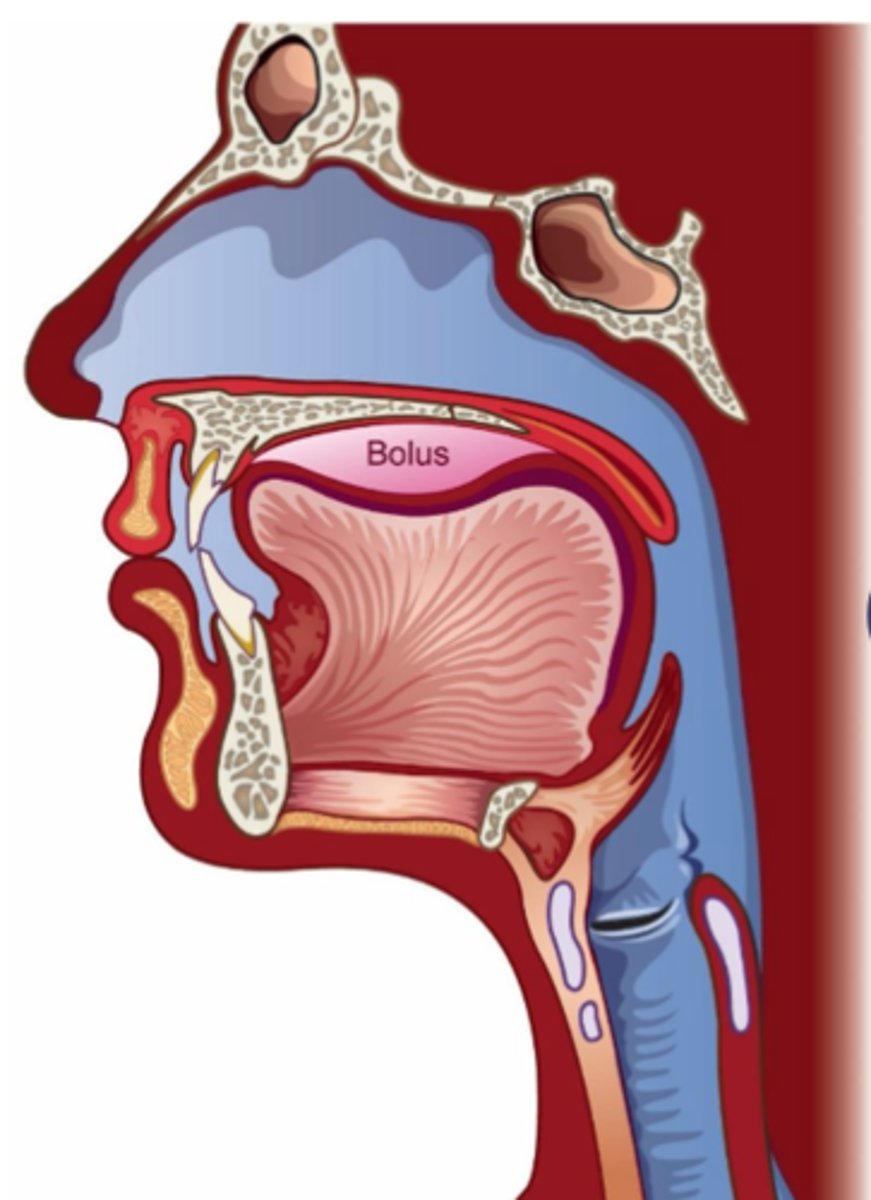
Oral Transport Phase
Voluntary
~1 sec
Purpose: Move bolus into pharynx, initiate pharyngeal phase
Steps:
- Elevate tongue tip and squeeze bolus against hard palate
- Lips usually press together firmly
- Cheeks pulled inward slightly to keep bolus positioned over tongue
- Elevate velum and constrict pharyngeal walls
- Swipe tongue back along the hard palate
- Begin to relax UES
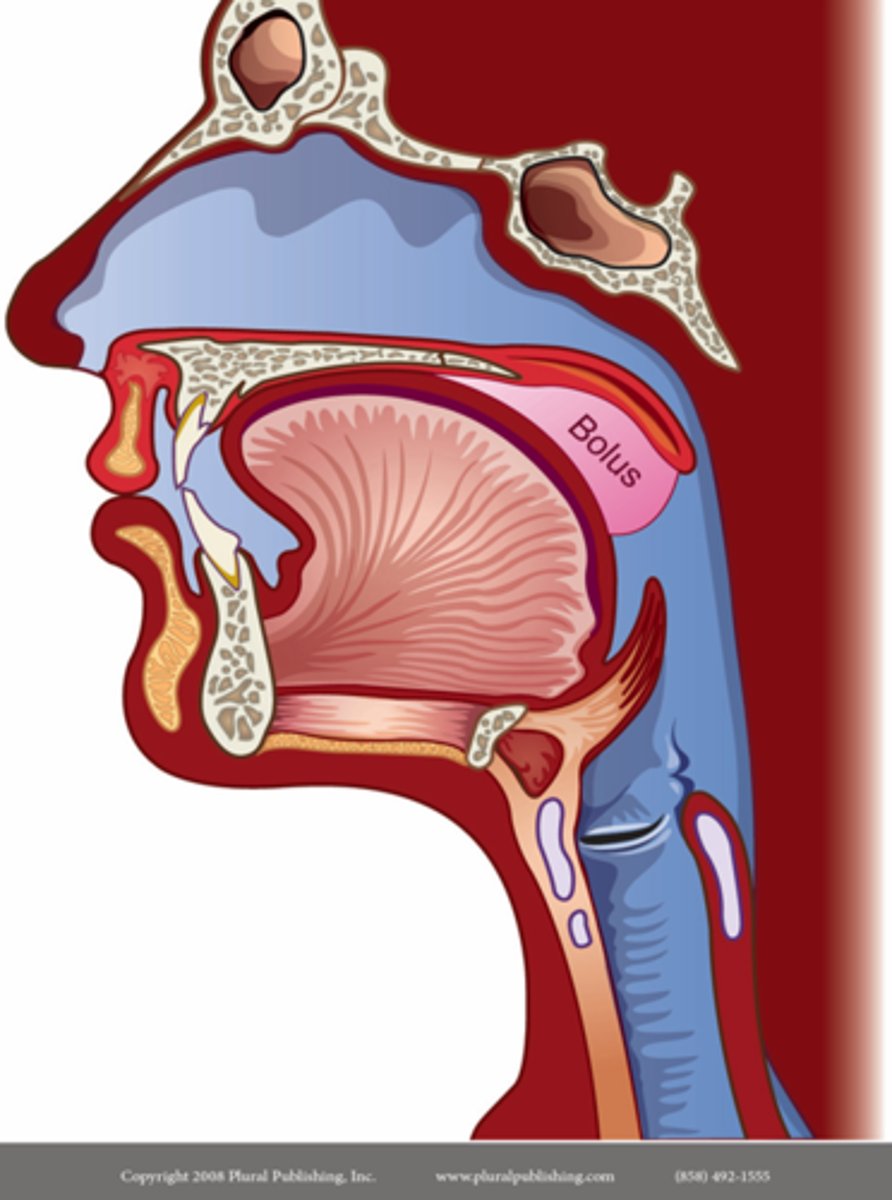
Pharyngeal Transport Phase
Reflexive
- Automatic sequence of events triggered when bolus passes anterior faucialpillars
- Series of rapid coordinated movements between pharyngeal muscles, lips,velum, epiglottis, hyoid bone, false vocal folds and true vocal folds
500-800 msec
Purpose: Propel bolus into esophagus
Steps:
- Lips and VP port tightly closed
- Hyoid bone and larynx moved superiorly and anteriorly
- Epiglottis covers aditus of larynx
- False vocal folds, true folds and aryepiglottic folds approximated
- Pharyngeal constrictors squeeze bolus in downward direction
- Cricopharyngeus muscle relaxes (opening UES) and is pulled forwardby elevation of larynx
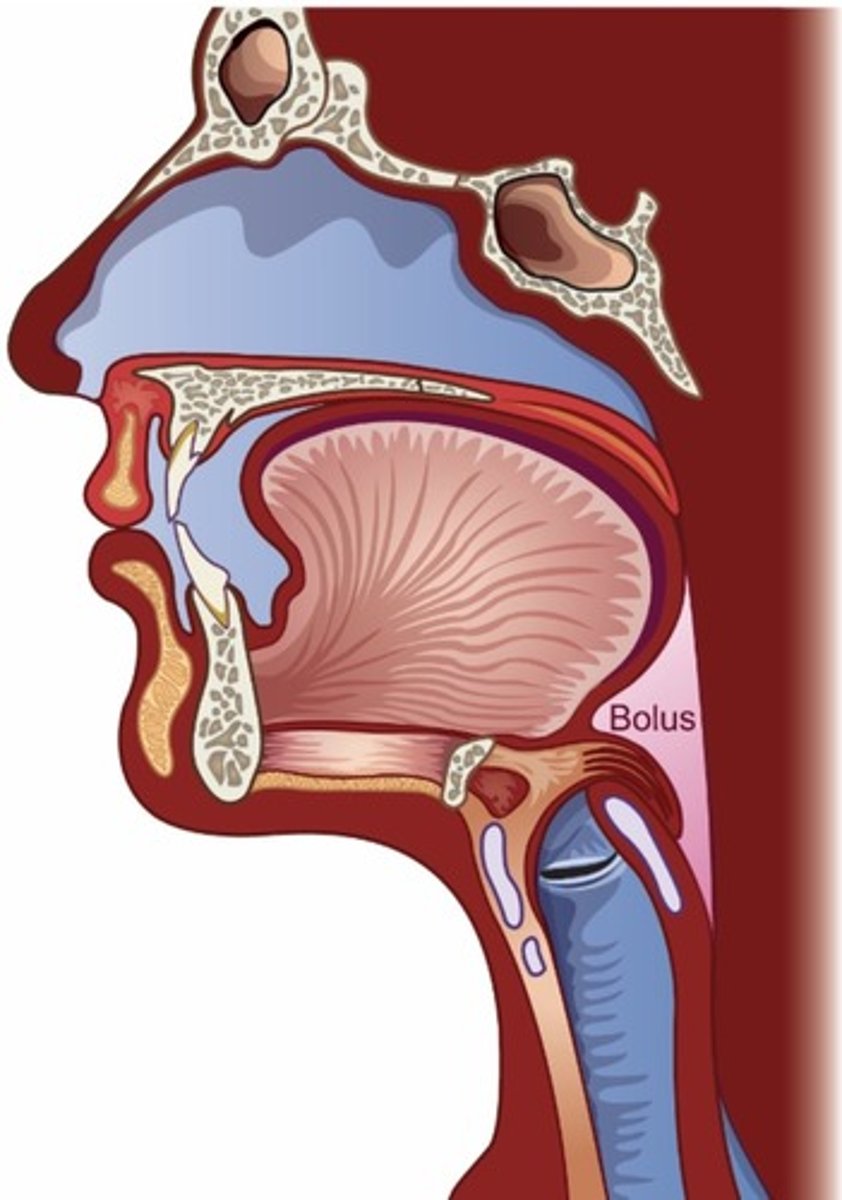
Esophageal Transport Phase
Reflexive
- Initiated shortly after bolus enters esophagus
8-20 sec
- Liquids faster than solids
Purpose: move bolus through esophagus into stomach
Steps
- Peristaltic contraction moves from striated muscle of upper 1/4 to smooth muscle of distal region at about 2-4 cm/sec
- Lower esophageal (cardiac) sphincter is segment of tonically contracted smooth muscle at distal end of esophagus
- Cardiac sphincter relaxes to allow passage of bolus into stomach
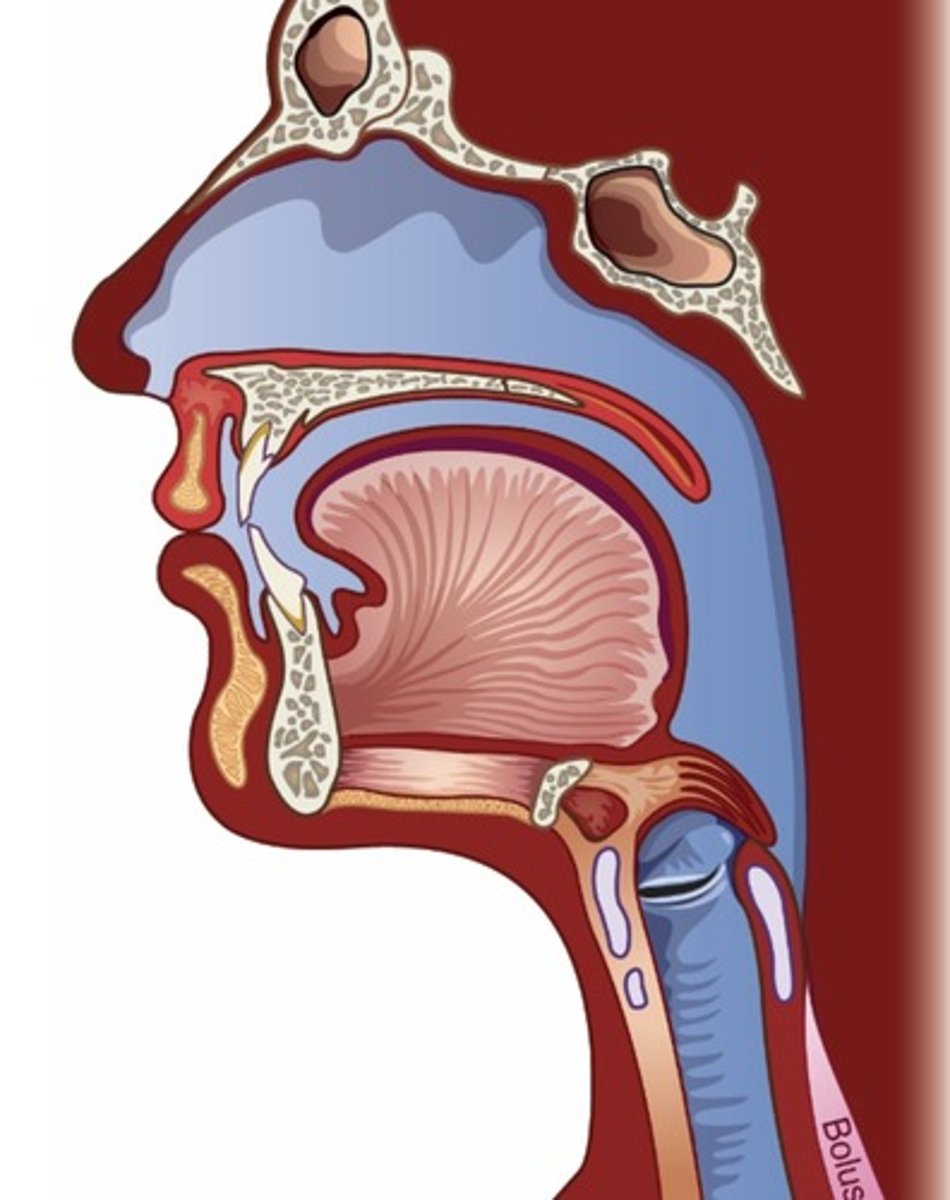
Phase Overlap
We describe the phases as a series of events, they can overlap
Oral prep phase may continue while part of bolus moves into pharynx
Action Overlap
Overlap of phases is apparent if the actions of individual structures are considered rather than the status of the bolus
Initiation of actions of selected structures during a swallow
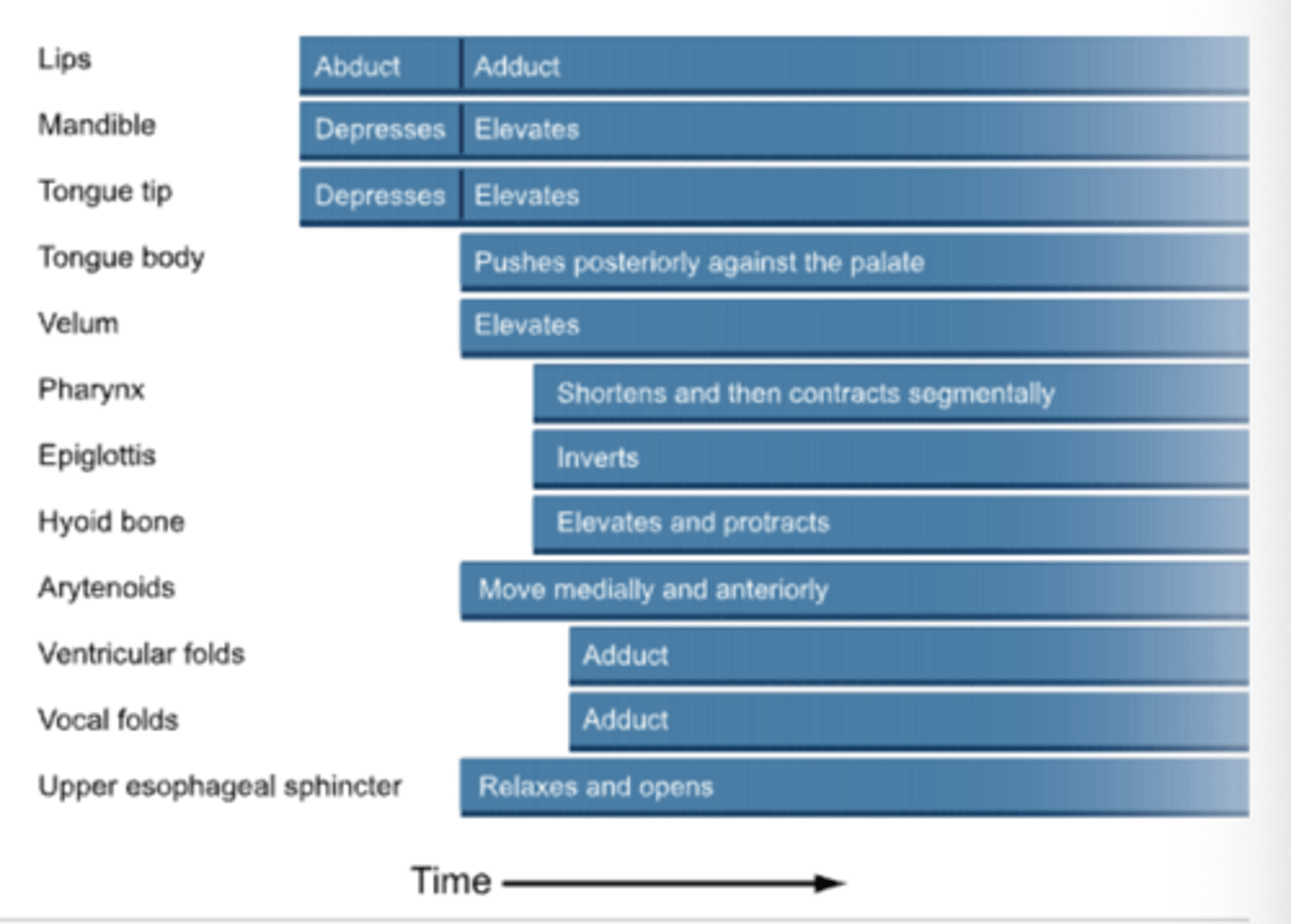
Breathing and Swallowing
Must coordinate breathing and swallowing to avoid aspiration
Usually occurs during expiratory phase
Typical pattern is expiration-swallow-expiration
Apnea (no breathing) lasts about 1 sec during Pharyngeal Transport phase
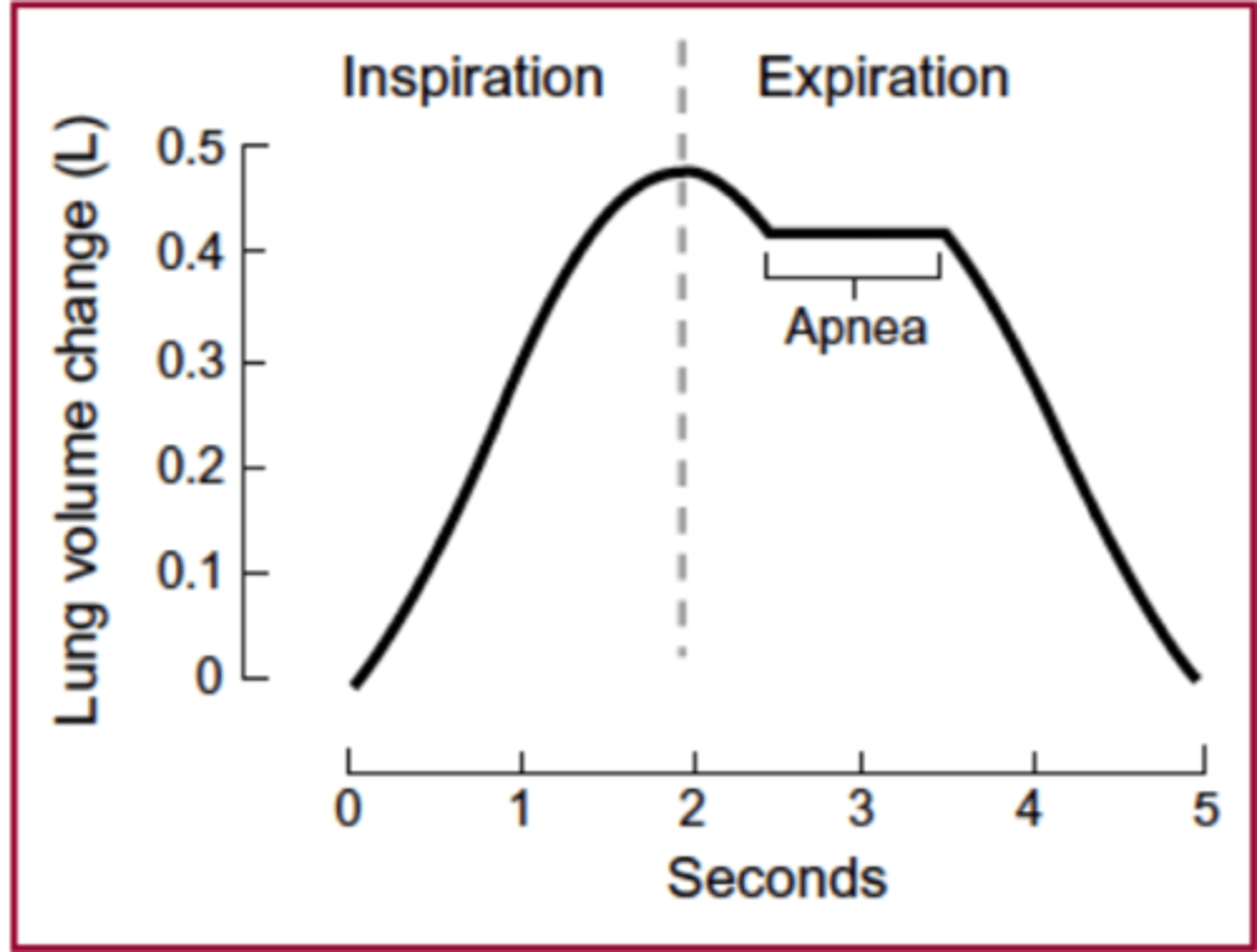
What participate in swallowing?
All of the articulators as well as the esophagus and stomach
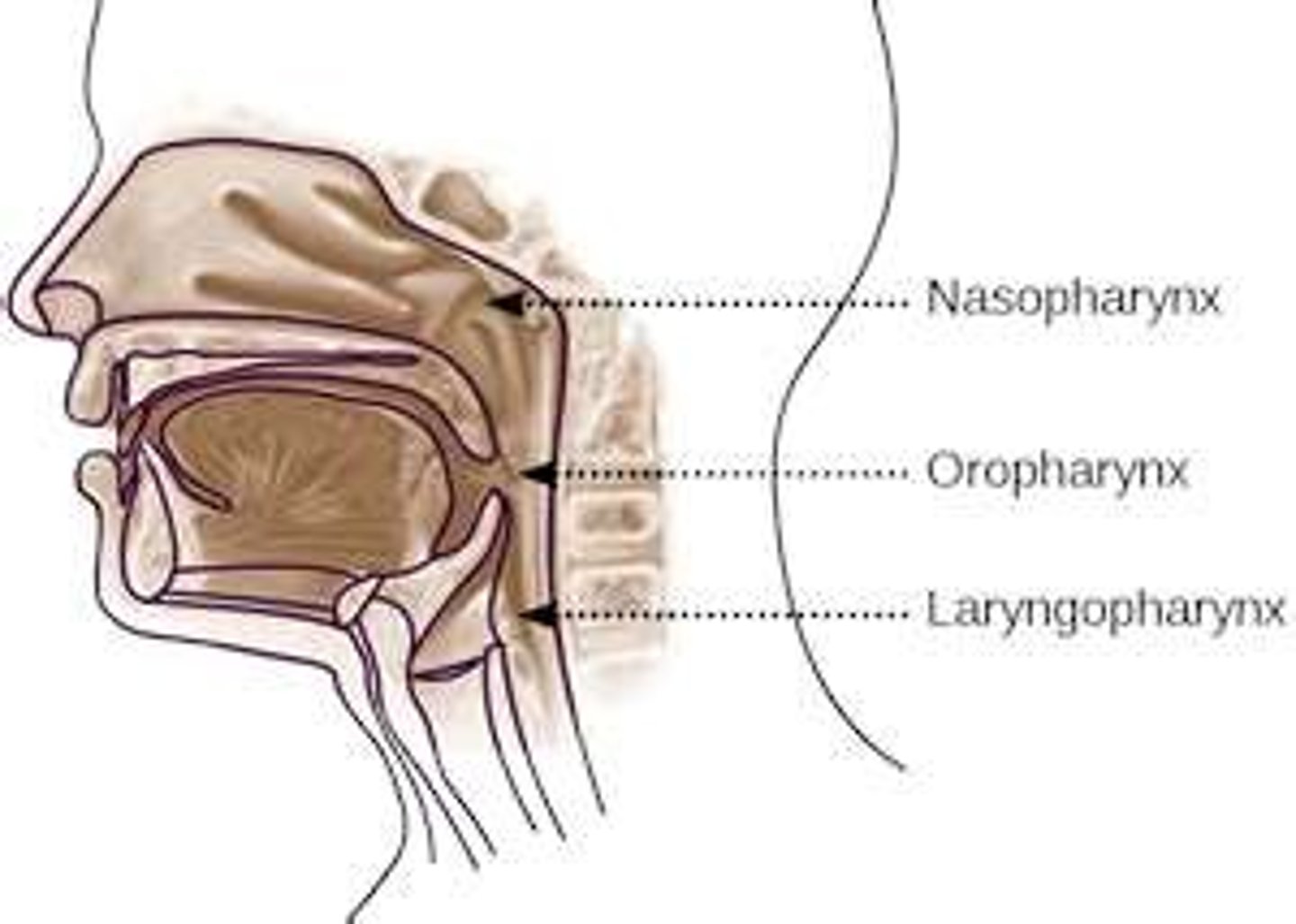
What are the four phases of swallowing?
Oral Preparatory
OralTransport
Pharyngeal Transport
Esophageal Transport
OP & OT are voluntary; PT & ET are reflexive
These phases can sometimes overlap
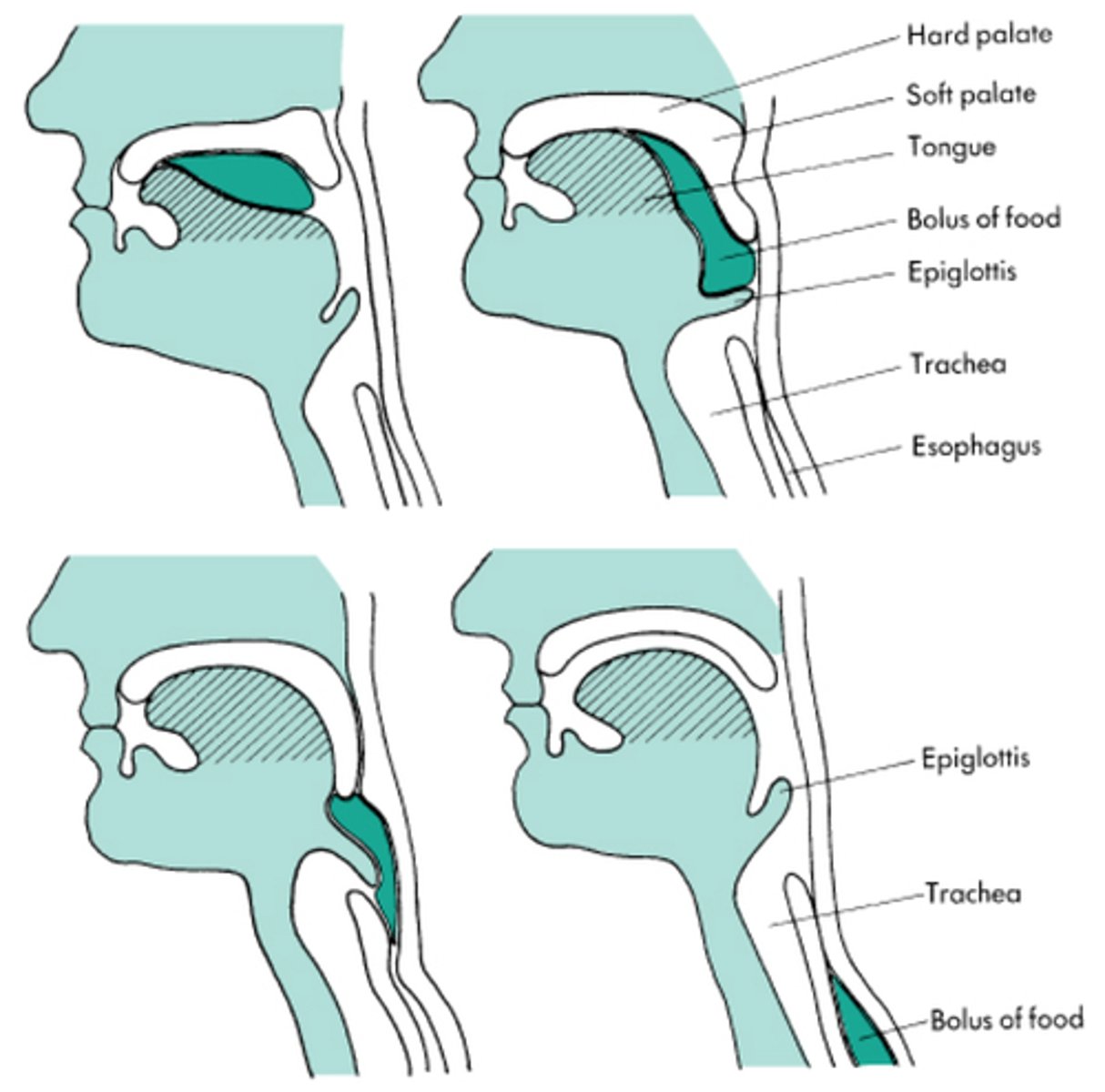
When does breathing stop?
During the Pharyngeal Transport phase for about 1 sec while the airway is blocekd to protect it from aspiration
Abnormal Swallowing
Dysphagia - difficulty in swallowing
Generally results from neuromuscular or structural changes inoral cavity, pharynx, or larynx
- e.g. stroke, neurologic disease, head and neck cancer surgery, radiation Rxfor head and neck cancer, traumatic brain injury
Many of these causes are also causes of communication disorder
- Not surprising since using same structures
Dysphagia generally divided in two categories
- Oropharyngeal
- Esophageal

Symptoms
Oral Preparatory Phase
- food spills into lateral oral sulci or base of tongue
- poor control of bolus
Oral Transport Phase
- food remains in mouth
- poor control of bolus for propulsion
Pharyngeal Transport Phase
- Residue
- Aspiration
- Penetration
- UES stays closed
Esophageal Transport Phase
- poor peristalsis
- reflux
Measuring Swallowing Function
Videoflouroscopy
Endoscopy
Manometry
Surface Electromyography
Ultrasonography
Aeromechanical Observations
3-oz water swallow test (screening for dysphagia)
- Aspiration
- Number of swallows/mean volume of swallows
- Duration/mean time per swallow
- Swallowing capacity (ml/s)
Videofluoroscopy
Same approach used to look at velopharyngeal mechanism
Person swallows substances mixed with barium sulphate
- Contrast material that allows bolus to be tracked visually as it travels through oral, pharyngeal, and esophageal regions

Endoscopy
Uses flexible endoscope inserted nasally and positioned in pharynx
Approach commonly referred to as Flexible Endoscopic Evaluation of Swallowing (FEES)
Observe person swallowing food or liquid that may be colored to aid in visualization of bolus
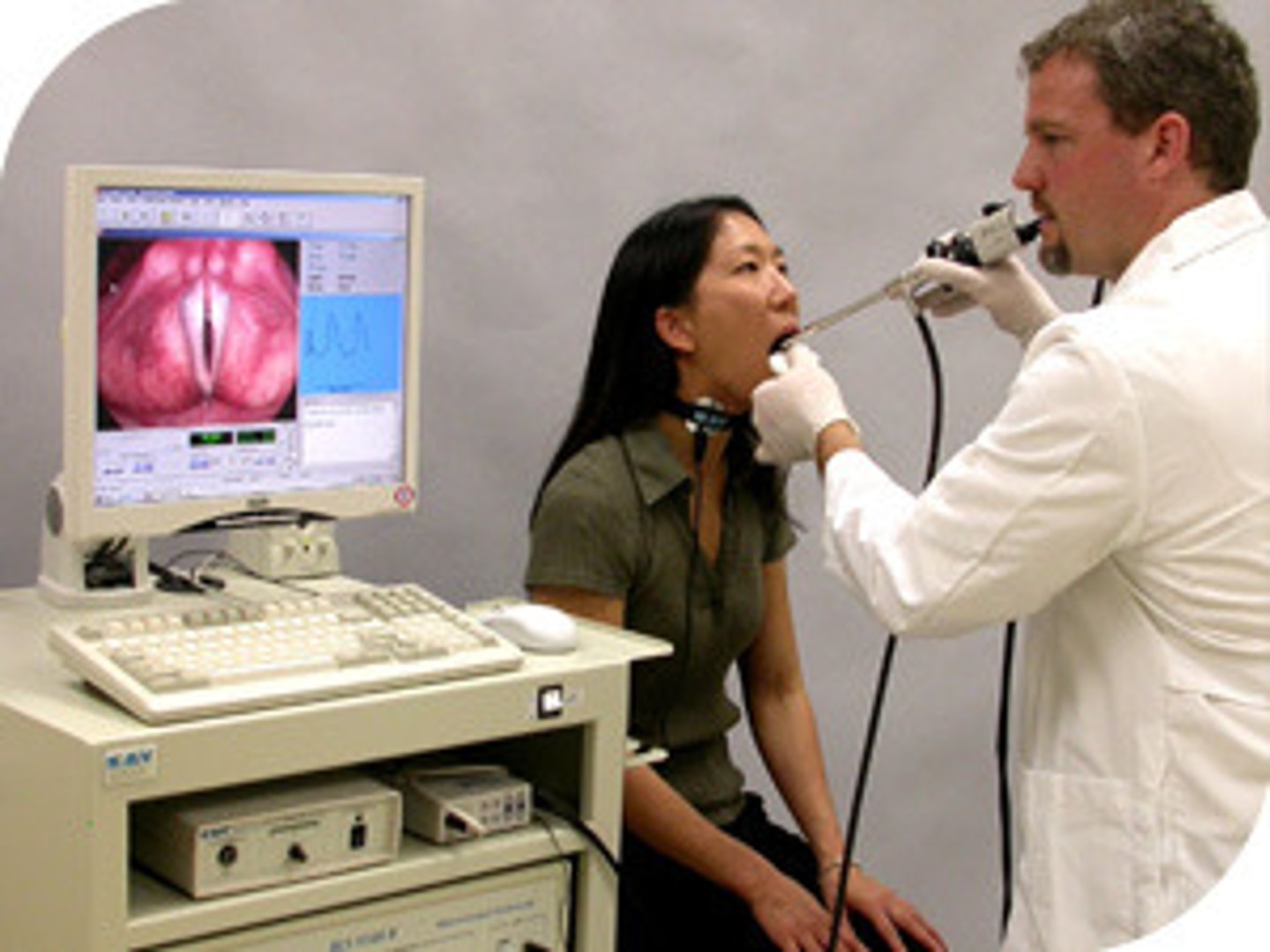
Ultrasonography
The transducer generates a signal that reflects back when it encounters airand is picked up by a senso
Can be used to image tongue and pharyngeal movements during swallowing
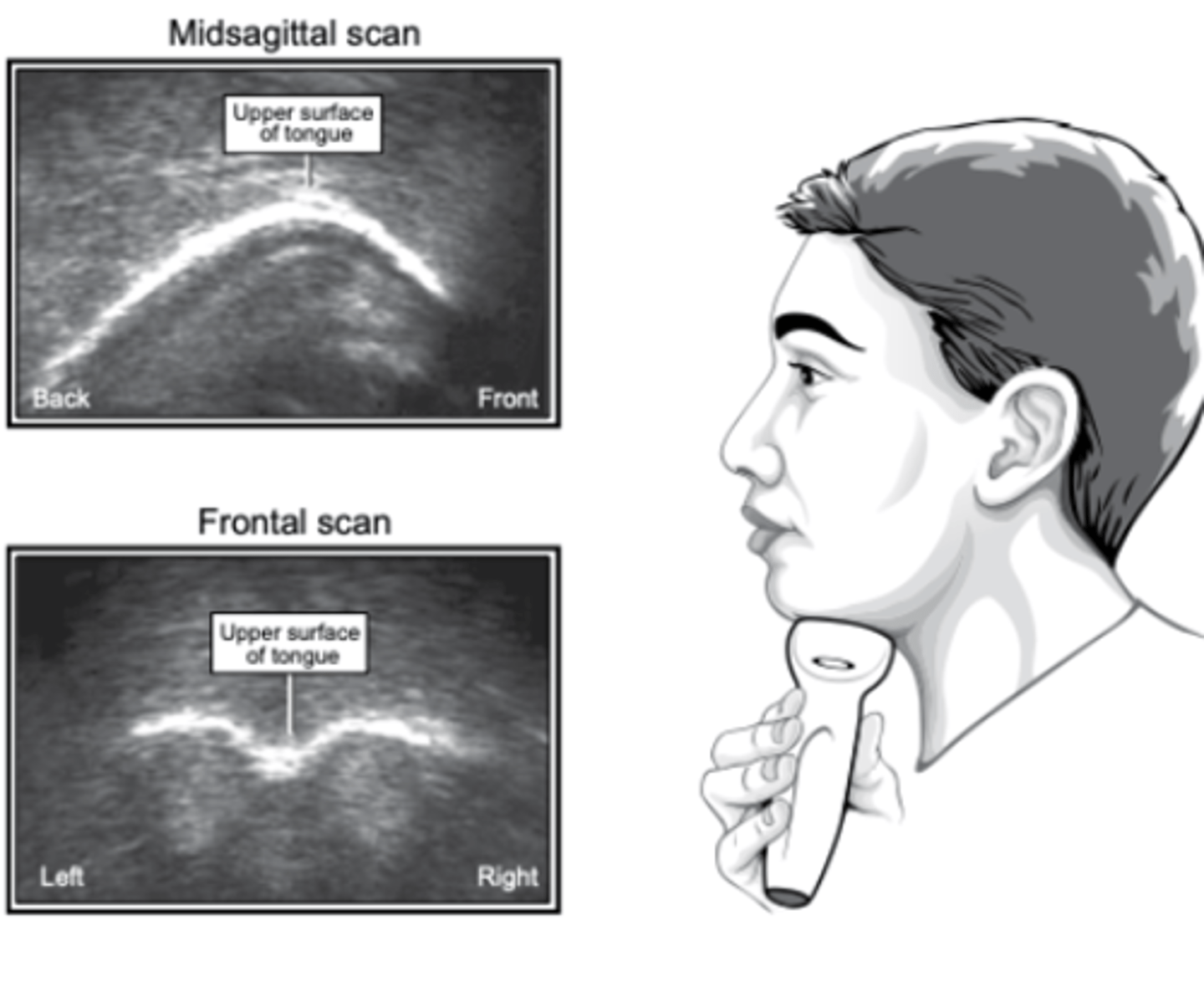
Tongue Force (Force Bulb)
Similar instrument clinically used for tongue force as part of dysphagia intervention
What is dysphagia?
Difficulty in swallowing
Can manifest in a variety of ways in the different phases of swallowing
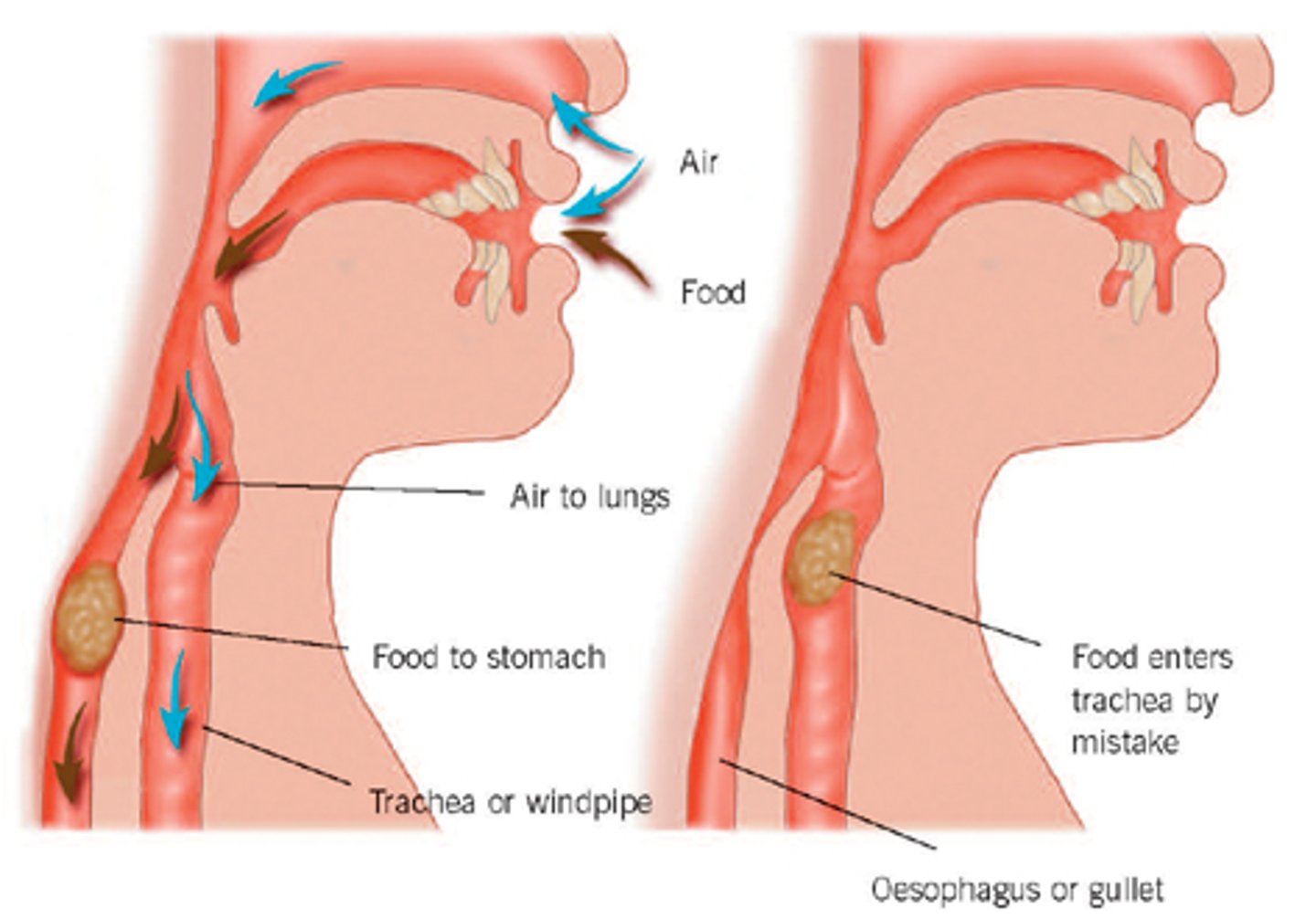
What does dysphagia result from?
Generally results from neuromuscular or structural changes in oral cavity, pharynx, or larynx
Dysphagia generally divided in two cavitites
Oropharyngeal
Esophageal
What are two common methods of measuring/evaluating swallowing function?
Videofluoroscopy
Endoscopy (FEES)